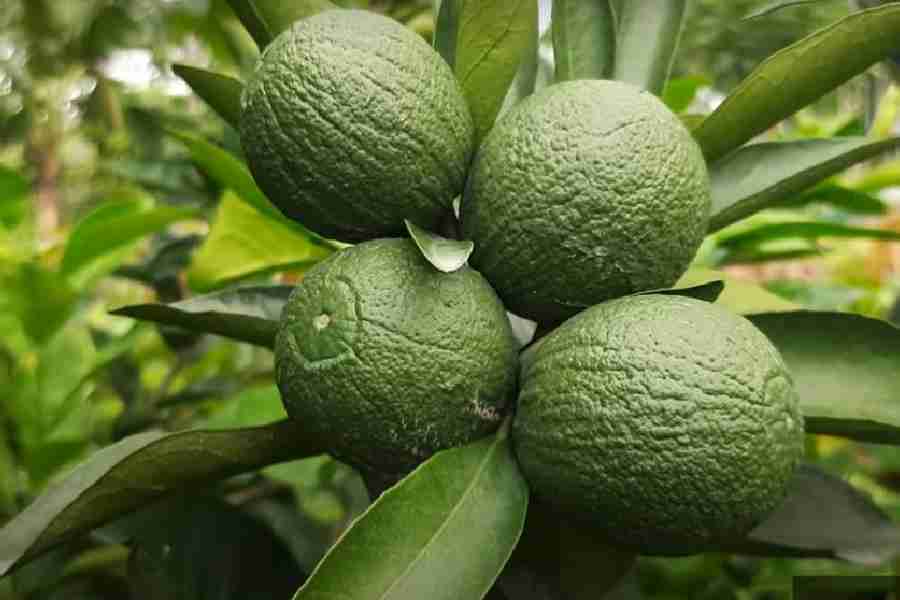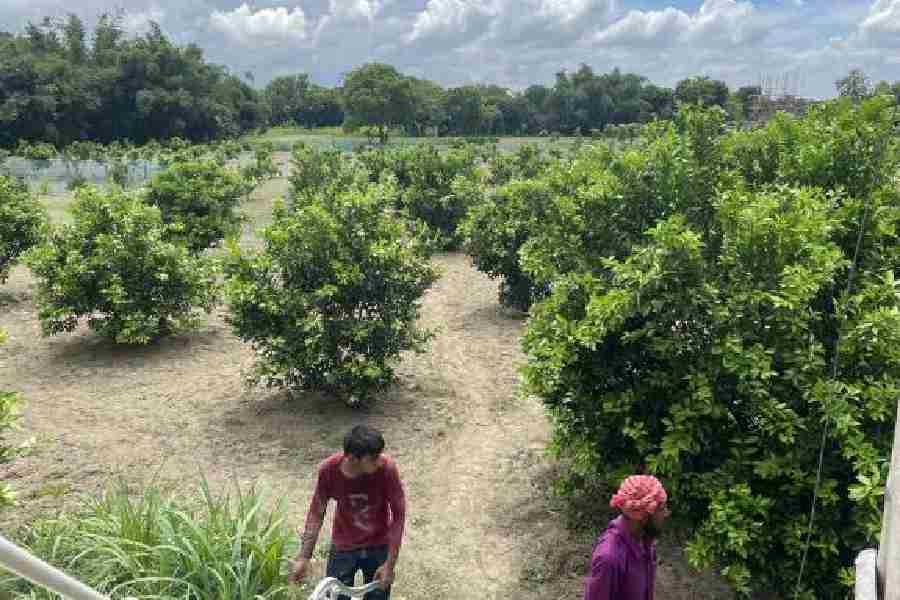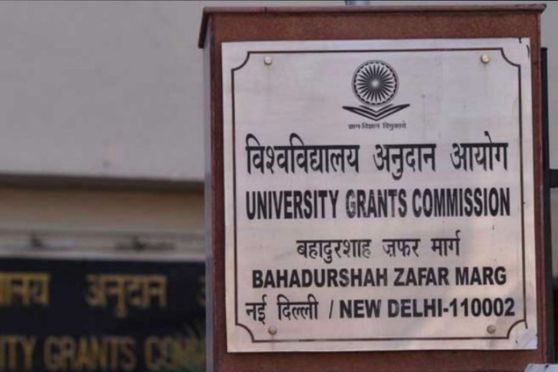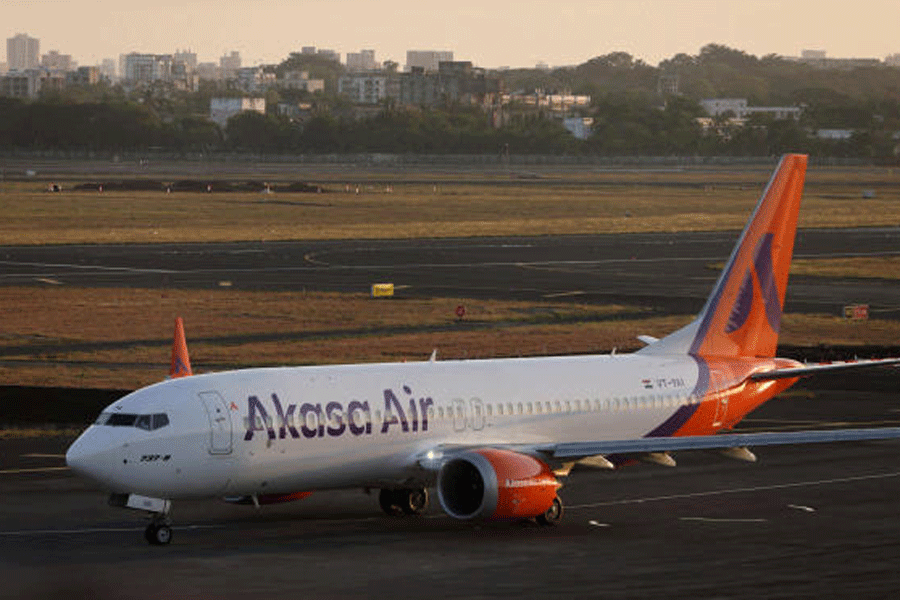Malta farming makes you a multimillionaire. When Samar Sharma, a 52-year-old retail shop owner of Bengal’s Nadia district heard this tagline while watching a YouTube video of a farmer in Bangladesh, he turned curious. He must have been desperate to become rich because he scoured the Internet and read up all he could about the strange fruit he had seen in the advertisement.
Malta is a citrus fruit. In India, it is to be found mostly in Uttarakhand. It resembles the musambi/ mausambi or sweet lime, except for the ring at one end, and is often passed off in the market as one.“It is also known as siki musambi in West Bengal,” says Saktipada Sarkar, another farmer — he is from Purulia — who has started farming malta. Siki is the Bengali word for a coin.
To get back to Sharma’s story, the leap from the virtual to the real did not take very long. A friend offered him five-and-a-half bighas (one bigha equals 0.619 acres) of land to grow malta. He tells The Telegraph, “The best part of malta farming is that the trees double their fruit-bearing capacity year on year. There is a good chance of becoming a millionaire.”
Many farmers across Bengal other than Sharma have started growing millions, aka maltas. Sharma himself started selling malta saplings to farmers who got in touch with him after having seen his videos. He himself had sourced saplings from Uttarakhand.
Yes, he had made videos to show that the malta is a fast-growing tree; at the end of Year Two of planting, it grows into a five-and-a-half-foot tree and starts bearing fruit. His video also goes into the details, such as how to maintain the trees, the return on investment, the demand for the fruit in the local market and so on and so forth.
This is no random video. Farming videos — apple farming in Murshidabad, success stories of Baruipur’s lychees and Malda’s mangoes, tutorials on organic farming — are a dime a dozen on YouTube and they have their dedicated viewership.
“I have sold nearly 2,500 saplings this year to farmers in the Sunderbans, South and North 24-Parganas, Malda, Murshidabad, Purulia, Bankura and also Alipurduar in north Bengal,” he says.
Malta farming is only five years old in Bengal. But the fruit has been growing in abundance in Uttarakhand for many years now. Says Sarkar, 76, “Malta is highly nutritious. The malta that is sold in northern India is yellow but in West Bengal, the fruit is harvested in October when it is still green.”
Like Sharma and Sarkar, Kuntal Ghosh from Alipurduar, Sira- jus Salekin from Murshidabad and Firoj Akhtar from Malda have started malta farming. Sharma used to run a shop, Sarkar is a retired primary school headmaster, Ghosh had a construction business, Salekin was working as an electric contractor and Akhtar used to grow mangoes earlier. To think, some social media posts changed the course of their lives.
The 29-year-old Salekin lives in Domkal in Murshidabad, close to the Bangladesh border. He says, “I came across a video where a Bangladeshi named Abdul Karim was earning huge money by growing malta. I got in touch with him to know more about the tree. The more I heard about it, the more lucrative it seemed.”
He tried sourcing saplings from Bangladesh but it did not work out. Eventually, he procured saplings from Nadia, where malta farming has been happening since 2018. He planted 300 saplings in five bighas of land. “After over two years, a single tree has borne 150 fruits,” Salekin says.

The circular mark at the bottom of the fruits bears testimony to its breed
Ghosh, 46, planted 2,600 plants in nine acres in Beltala in Alipurduar. Besides malta, he also has been growing moringa, lemon and guava in his orchard. “I have 1,000 lemon trees. But I know from my research and by speaking to experts that malta will bring me more profits,” he says.
Ghosh has employed 10 farmhands to look after his malta saplings but his investment in business is not high. “I have spent Rs 50 on each malta sapling, for moringa I have spent Rs 20 per sapling, but moringa has to be planted afresh every year for a good yield whereas a malta tree lives for 20-22 years.”
Akhtar is the first in his family to have invested himself in malta farming. He says, “I have been told that I am the first person in this area to grow this crop,” he says.
But Malda is known for mangoes. Where have the mangoes gone? Akhtar continues to grow mangoes, but then proceeds to explain why malta is more lucrative. He says, “A malta sapling costs anything between Rs 30 to Rs 40 while mango saplings cost Rs 150 to Rs 200 each. Also, a mango tree does not give you any profit in the first five years and after five years it yields only 10-15 kilograms of mangoes. But a malta tree bears fruits from the second year itself and after five years it produces 70 to 80 kilograms of malta.” Sharma, who had invested Rs 1.5 lakh in 2022, has earned Rs 14 lakh this year.
However, not everything about the malta on YouTube is kosher, as Sarkar has discovered. He had watched one wherein a “foreigner” advocated spraying the saplings with a mix of eucalyptus oil, neem, clove oil and liquid soap. Hesays, “I did exactly that and lost a couple of my plants; they just wilted and died.”
Remember, to turn your maltas into millions, conditions apply.











